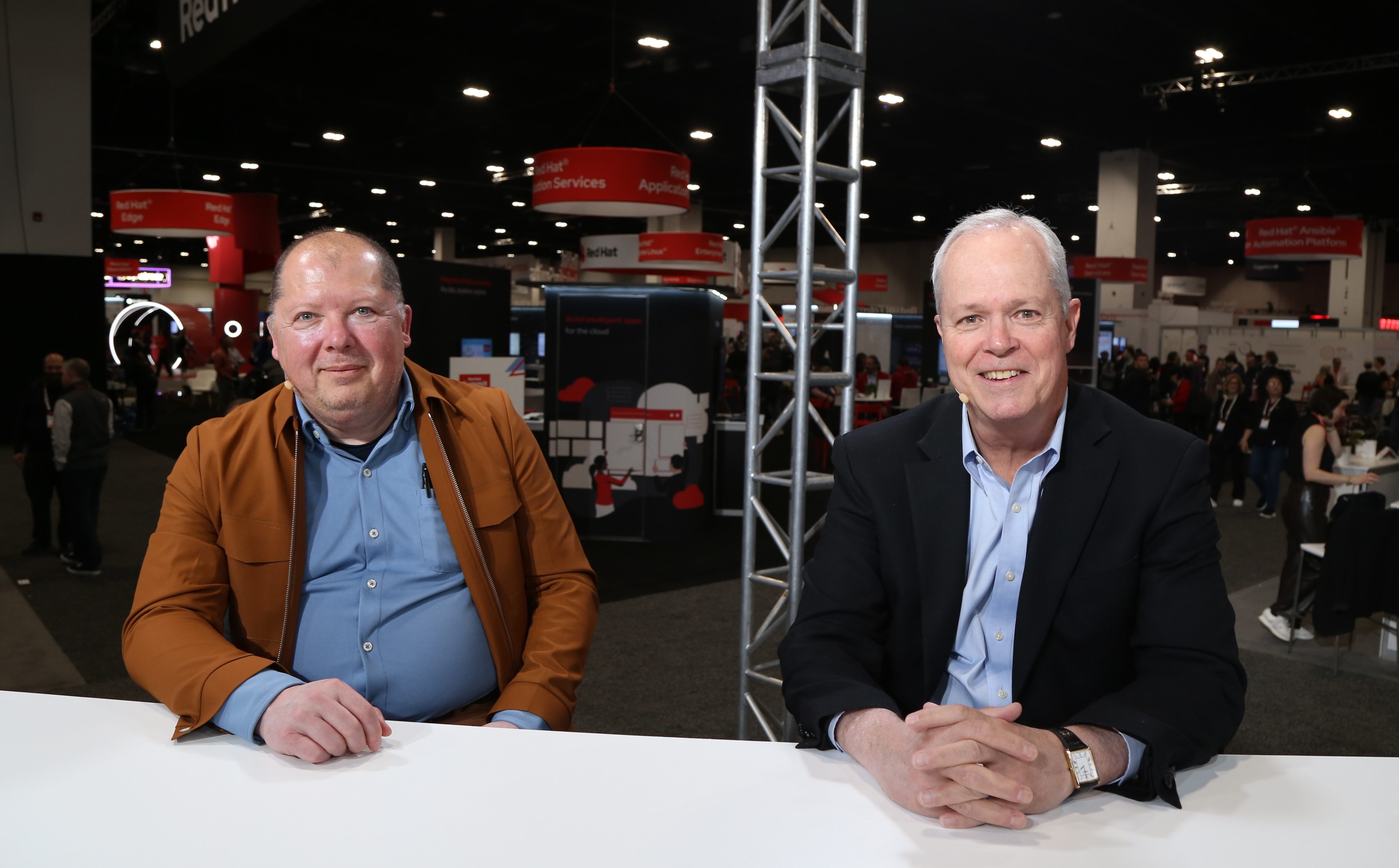 NEWS
NEWS
 NEWS
NEWS
 NEWS
NEWS
When Tesla Inc. began building out self-driving technology for its electric cars, the industry was thrown into a frenzy from which several talking points emerged — with excitement on one side and pessimism on the other. Since then, however, progress in that regard has been slower than expected. Red Hat Inc. aims to expedite the tech for autonomous driving with its radical technology stack.

Talking about the infusion of open source in autonomous driving tech, with Deloitte’s Stavros Stefanis.
“Red Hat believes that now is the time for open source and automotive,” Dan Noal (pictured, right), director of product management for in-vehicle OS at Red Hat. “We’ve seen industries transform primarily in the data center enterprise applications where Red Hat Enterprise Linux is obviously a leading commercial solution. And edge markets and specifically consumer automotive, we think, is the next opportunity.”
Noal and Stavros Stefanis (left), principal and U.S. software-defined vehicles leader at Deloitte Consulting, spoke with theCUBE Research’s Rebecca Knight and Paul Gillin at Red Hat Summit, during an exclusive broadcast on theCUBE, SiliconANGLE Media’s livestreaming studio. They discussed Deloitte and Red Hat transforming the automotive industry by embracing open-source technologies, paving the way for safer, more efficient and innovative transportation solutions. (* Disclosure below.)
The overarching theme of Deloitte’s collaboration with Red Hat emphasizes the shift from hardware-centric to software-defined vehicles. This transformation enhances the autonomous driving experience and extends the vehicle’s lifespan, much like a smartphone, through over-the-air updates and feature additions, according to Stefanis.
“We are at the point where the current way software is developed by the automotive industry, whether you are an OEM or a supplier or even a tier two company, is not easily scalable,” he said. “The reason that it doesn’t scale is that you need to evolve into an environment that’s open enough to attract software engineering talent and software engineering capacity since most of the content of the car is becoming more and more software-centric.”
On a software note, Red Hat’s In-Vehicle Operating System aims to accelerate software-driven transportation beyond the capabilities of current proprietary systems. Built on open-source Linux, it enables accelerated innovation, scalability and standardization. Despite initial challenges, the industry is increasingly receptive to open-source solutions, especially as Linux matures for safety-critical systems.
“The world has come a long way; compute has come a long way, and the time we believe is now for Linux to be fully qualified for functional safety and safety-critical workloads,” Noal said. “That’s what we’re working on and the industry is waiting for a full embrace of what we’re doing.”
Here’s the complete video interview, part of SiliconANGLE’s and theCUBE Research’s coverage of Red Hat Summit:
(* Disclosure: TheCUBE is a paid media partner for the Red Hat Summit. Neither Red Hat Inc., the sponsor of theCUBE’s event coverage, nor other sponsors have editorial control over content on theCUBE or SiliconANGLE.)
Support our mission to keep content open and free by engaging with theCUBE community. Join theCUBE’s Alumni Trust Network, where technology leaders connect, share intelligence and create opportunities.
Founded by tech visionaries John Furrier and Dave Vellante, SiliconANGLE Media has built a dynamic ecosystem of industry-leading digital media brands that reach 15+ million elite tech professionals. Our new proprietary theCUBE AI Video Cloud is breaking ground in audience interaction, leveraging theCUBEai.com neural network to help technology companies make data-driven decisions and stay at the forefront of industry conversations.